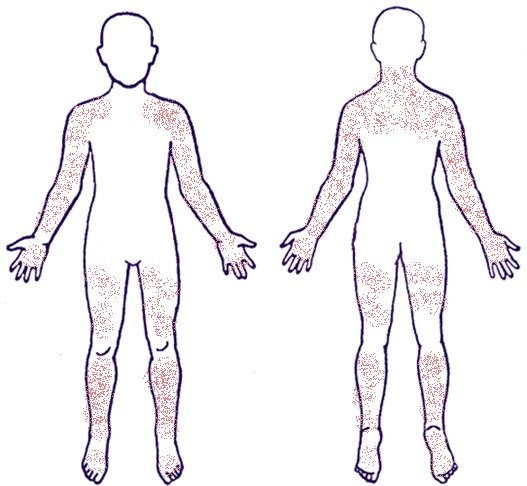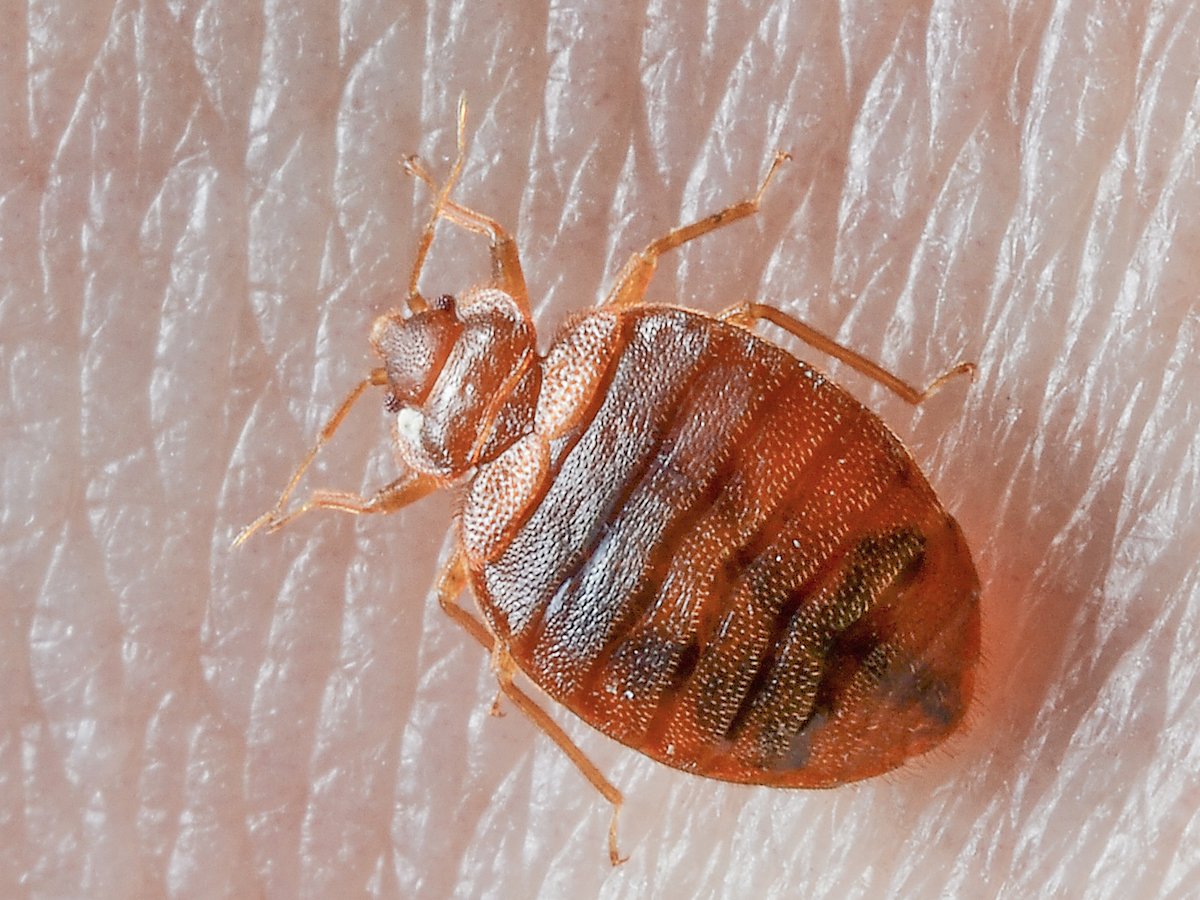If you’ve fallen victim to the pesky bed bug, this in depth guide includes all you need to know about what to do for bed bug bites. You’ll find tips on how you can ease the itching and pain after a bed bug bites you. And also on how to detect a bed bug bite, where they occur, how they feel. If you have spotted some bites on your body, you’ll probably have to prepare yourself for getting rid of those tiny monsters. Check out our ultimate guide for getting rid of bedbugs.
Signs of Bed Bugs Bites
It’s not always easy to know whether you’ve been bitten by a bed bug. This is because the bite may not always leave a mark on your skin. It depends on how sensitive you are to them. If you do get a reaction after a bite, you can consider yourself lucky in a way. At least you’ll know that you have to take action against the intruder. If your body does not react to the bite at all, the tiny devils can munch away unnoticed for a long time, expanding their colony.
What you need to look for are red welts that are either flat or slightly raised. The welts may not appear immediately after the bed bug bites you. It can take a few days before your body exhibits symptoms of the bite and leaves a visible mark. More often than not the bites are grouped together in clusters, or appear in a straight or zigzag line. This line traces the bed bug’s nocturnal travel and hunt for food.

Although not a visible sign, you can also detect a bed bug infestation by the smell. The insects tend to release pheromones that leave behind a musty scent, as a means of communication. If you have a large bed bug population inhabiting your bedroom, it can start smelling like a wet towel that you’ve accidentally forgotten in a bag for too long.
Signs of Bed Bugs
Apart from the signs of bed bug bites, you can detect the presence of these bugs by a number of other things:
- Exoskeletons. Bed bugs cast their shells multiple times during their life cycle. The process is called molting and the end result is an exoskeleton. You can find these in your bed or in the bed bugs’ hideouts.
- Blood specks. If you find specks of blood in your bed (mattress, bedding, box spring) or in couches, armchairs or other upholstered pieces of furniture, you may be dealing with a bed bug infestation.
- Fecal droppings. You may find black blobs in your bedroom which can indicate the presence of bed bugs. Often you’ll only see spots that look like black marker stains, without the actual excrement.

Where Do Bed Bugs Bite Mostly?
Bed bugs attack areas of your skin that are exposed to the bed. They’re luckily not good at biting through materials. This means that usually it’s the arms, shoulders, the neck and legs that will fall prey. If you’re wearing long sleeved pj’s, you can protect some parts of your body from getting bitten. But there’s a good chance the bug will find another place to feast on.

The bitten areas are also a good way to distinguish bed bug bites from flea or chigger bites, for example. The latter like to bite around the ankles, while bed bug bites are most often around the shoulders and arms.
Do Bed Bugs Bite Your Scalp?
No, bed bugs don’t go for scalps. Their legs and bodies are just not built for treading through human hair. So your scalp is off their radar. Bed bugs may still bite around your neck, hairline, cheeks, as these parts are more exposed.
Can You Feel a Bed Bug Bite?
You won’t feel the bed bug bite you. Bed bugs have an elongated straw-like beak that they pierce your skin with. It’s very sharp, so you won’t feel anything, even if the bed bugs bite you multiple times. Plus, the bed bug’s saliva contains an anesthetic which will prevent you from feeling their bites. So although it’s inconvenient, the feeding bed bug will not wake you up during the night.
Do Bed Bugs Bite Every Night?
To answer this question, let’s take a closer look at a bed bug’s life cycle. Each bed bug will start out as an egg that will hatch within two weeks. The young bed bug has now entered the nymph stage. It immediately starts feeding. The nymph stage is composed of 5 stages, that all end with molting – the bed bug sheds its shell. Each molting requires another feeding.
The nymph stage usually lasts for 5 weeks and after the last shedding it becomes an adult bed bug. The adult bed bug tends to feed once a week if there is a host nearby. Depending on the surrounding conditions, an adult bed bug can survive up to 400 days without feeding.

So the same bed bug does not bite every night, it simply doesn’t have to. But if you have a large population hiding in your room, this changes things. A female bed bug needs to feed to be able to lay eggs. It can produce between one to twelve eggs daily. As soon as the eggs hatch, the nymphs will need a place to dine. Meaning you can indeed get bitten every night if there’s a bigger colony set up in your home.
Do Bed Bug Bites Itch?
A single bite may not become itchy and there is a chance it will even go unnoticed. It all depends on how sensitive you are to proteins in the bed bug’s saliva. The proteins called vasodilators dilate your blood vessels and anticoagulants will prevent your body from stopping the bleeding. Your sensitivity to these proteins determines the size of the mark and also the itchiness of the bite.
If you’re one of the sensitive ones, this is usually what happens. After the bite, there is a burning sensation but nothing too strong. Red bumps appear on the burning area and can become itchy. There are also more extreme reactions where the bumps swell up or become inflamed. It’s important to keep yourself from scratching the bites, even if they drive you crazy. You don’t want to risk infection by adding bacteria from your fingertips and nails.
What To Do for Bed Bug Bites?
If you’ve already been bitten, there are a few ways to keep the damage at bay. If you can keep your hands off the itching bite, the welt usually goes away in around one week. For those who develop a strong reaction, such as blisters, infections, allergic skin reaction, it’s better to turn to a dermatologist.
Most often the bites are not that serious and you can just ease the inconvenience with some home remedies.
Best home remedies for bed bug bites
- Use ice packs to numb the areas where the bed bug bit you. This will reduce the urge if itching. Remember to never put ice directly on your skin. Always use a towel of other piece of cloth to avoid the direct contact to your skin.
- Aloe vera gels‘ antibiotic properties will help keep the bites clean. If you really can’t keep from scratching the bites, at least you won’t have to worry about secondary infection.
- Use baking soda paste. Mix baking soda with water until you have a thick paste. Cover the bed bug bites with the paste and let it dry. Wait for about an hour and then wash the paste off with warm water. This is a well-known remedy for bug bites that relieves the itchiness and keeps the swelling down.
- Dip a piece of cotton in lemon juice and gently pat the bites to relieve itching.
- Mix oatmeal with a few drops of water and apply the paste to the bed bug bites. Keep it there for 10-15 minutes and then rinse. Oatmeal works wonders against skin irritation.
- Thanks to the anti-fungal and antiseptic properties of tea tree oil, it is a great natural remedy for bed bug bites. Dilute it first with water, then apply it on the bites 2-3 times a day.
- The acidic contents of apple cider vinegar enrich it with anti-inflammatory properties. This will help relieve the burning and itching sensation.
- Regular white tooth paste with its cooling menthol helps helps ease the itch and burn.
- Peel or slice up a cucumber and place it on the bites. The vitamin C, caffeic acid and ascorbic acid in the cucumber are a helpful remedy for bed bug bites.
